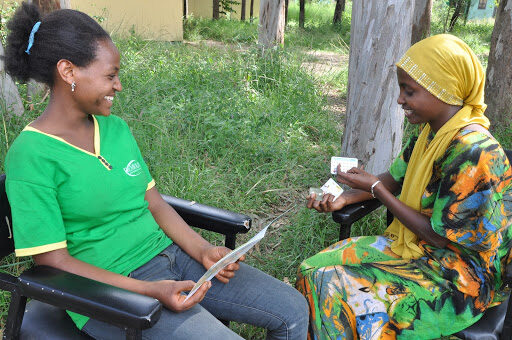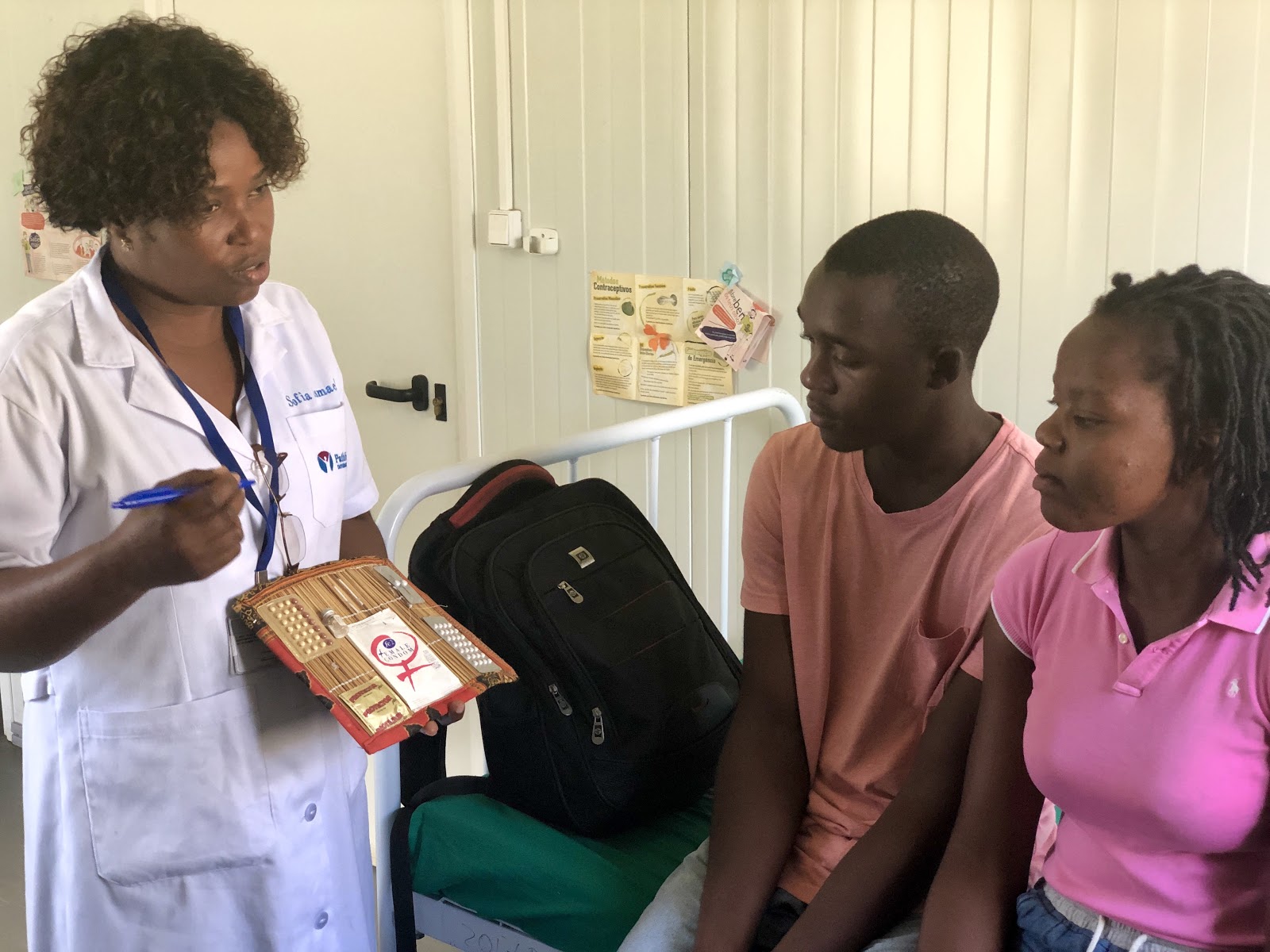Responsive Systems Meet Adolescent Reproductive Health Needs

Mary convinced her friend to take an hour-long walk with her to the nearest clinic after school one day. She wanted to learn more about how to prevent pregnancy. When the pair arrived, they found the clinic was already closed for the day. Disappointed and frustrated, she never returned. Six months later, Mary became pregnant. After delivering her baby at a facility, she was shamed by her health care provider for becoming pregnant while unmarried and still in school. Mary was not counseled on postpartum family planning since the doctor believed the experience of getting pregnant would deter her from having unprotected sex again. When she became pregnant less than two years after having her first child, she delivered at home for fear of being treated poorly.
This is the story of too many girls and young women who experience challenges accessing high-quality and respectful health services.
For decades, the primary solution to address the poor quality and accessibility of health services for adolescents has been adolescent-friendly health services. Adolescent-friendly health services meet quality standards that make them accessible, acceptable, equitable, appropriate, and effective for adolescents. In practice, adolescent-friendly health services are typically implemented by providing a one “youth-friendly” training to a health care provider and creating separate rooms or corners in health facilities where adolescents either wait or receive health services. In many instances, the current practice leaves many young people confused about where they are welcome and in some cases, what services are available to them.
There is increasing consensus that adolescent-friendly health services—as currently implemented—are not consistently scalable nor sustainable. When donor funding ends, spaces for adolescents are often rapidly repurposed. It is not uncommon to visit an adolescent-friendly room in a health facility only to find it full of dusty boxes of supplies. There are still millions of adolescents who lack access to any health care, and family planning/reproductive health (FP/RH) care in particular. This has only worsened in the context of COVID-19.
Ultimately, health-care provision must evolve from adolescent-friendly projects to adolescent-responsive programmes and systems. (WHO, Health of the World’s Adolescents, 2014)
We need to evolve from relying only on separate rooms and corners to deliver services to adolescents. In response, the World Health Organization, a recently released update to the High Impact Practice Enhancement, and those working in the adolescent and youth reproductive health field recommend an adolescent-responsive health systems approach.
What is an adolescent-responsive health systems approach?
Each building block of the health system—including public and private sectors and communities—respond to the health needs of adolescents in an adolescent-responsive system. Here are some examples of how the different system building blocks can be responsive:
- Service delivery: Adolescents have access to an integrated package of health care, including FP/RH, maternal, newborn, child health and nutrition (MNCHN), gender-based violence (GBV), and routine curative and preventative care. Care is delivered through multiple different entry points that are designed to meet youth where they are in facilities, communities, schools, workplaces, pharmacies, and more.
- Health workforce: All health care staff who interact with adolescents, including community and facility-based providers, are adolescent-competent and unbiased through a combination of pre-service education, in-service training, supervision, and mentorship.
- Health information: Data are collected by age and sex along with adolescent client feedback. This data is used at all levels of the health system to inform ongoing improvements to service delivery for adolescents.
- Medical products: All commodities are available without restrictions by age, sex or gender identity, parity, marital status, or other characteristics.
- Financing: Adolescents and services for adolescents are included in insurance schemes and other financing initiatives.
- Leadership and governance: Policies, standards, guidelines, and budget allocations uphold adolescent rights to healthcare and are implemented. Mechanisms are in place for adolescents to hold health systems accountable for meeting their needs.
- Community: Community health care systems intentionally reach adolescents, ensuring that health care is linked with social norm and behavior change strategies that address adolescent health and gender inequality.
Imagine how Mary’s story might have turned out differently if the clinic had been open at a convenient time; if the health care provider who cared for her during her delivery was respectful; or if her family planning, maternal health, and newborn health needs were addressed in an integrated way.
By strengthening the different elements of a health system instead of focusing only on separate rooms or irregular provider training, we can more sustainably meet the needs of adolescents at scale.

© Lucia and Huldo, Pathfinder 2019
How do we move forward together?
In December 2020, the NextGen AYRH Community of Practice (CoP) and MOMENTUM Country and Global Leadership project hosted a technical discussion to reflect on adolescent-responsive health systems and what it will take to advance implementation of this approach.
Ministries of health and adolescent-focused health initiatives can immediately take small steps towards a responsive system by expanding service delivery points to reach adolescents where they are, complementing provider training with robust supervision and mentorship, and ensuring mechanisms are in place for adolescents to hold the health system accountable.
In addition, we identified several areas for collective action:
- Forge stronger partnerships between actors working on health systems strengthening, universal health coverage, MNCHN, quality improvement, youth social accountability, and adolescent and youth reproductive health to ensure that adolescent-responsive systems are concrete and catalyze action beyond typical adolescent and youth reproductive health actors.
- Position youth leadership and youth-led social accountability at the center of adolescent-responsive systems. This requires both recognizing that engaging youth is important as well as including youth in the design, implementation, and evaluation of strategies to ensure adolescent-responsive systems. implementation, and evaluation of strategies to ensure adolescent-responsive systems.
- Document and learn about the challenges and successes from countries who have made progress in adolescent-responsive systems, such as Ethiopia. Leverage cross-country networks such as FP2030, IBP, and the Ouagadougou Partnership to facilitate knowledge exchange.
- Improve strategies and indicators for monitoring and evaluating adolescent-responsive systems to reduce the reliance on indicators such as “number of adolescent-friendly sites.”
Join us in advancing this important agenda as a member of NextGen RH. NextGen RH is a new CoP, focused on strengthening collective efforts to advance the field of AYRH. Supported by an advisory committee and general members, the CoP serves as a platform of collaboration, knowledge sharing, and capacity building to creatively develop solutions to common challenges and develop and support AYRH best practices. Please join us on our NextGen RH CoP Community to receive CoP updates and engage with other members!
We hope to see you at our upcoming webinar on this topic, Adolescent FP and Sexual and & Reproductive Health: Health Systems Perspective, on March 16 from 8:30am-10:00am EDT. In conjunction with E2A, HIPs, IBP, FP2030, and the Global Financing Facility, we will dive into perspectives on shifting to an adolescent-responsive health systems approach, explore key findings from the newly released HIP brief on adolescent-responsive services, and discuss key learnings from countries implementing ARS approaches.
Acknowledgements: Thank you to NextGen AYRH COP members who provided input on this piece: Caitlin Corneliess, PATH; Cate Lane, FP2030; Tricia Petruney, Pathfinder International; and Emily Sullivan, FP2030.





